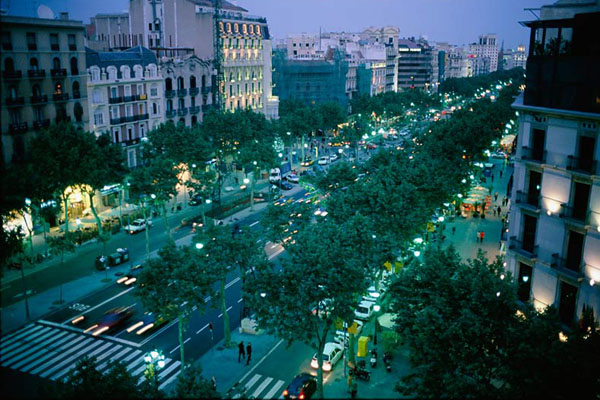Hey everyone. This post is going to be a liveblog this evening when the results are coming in. Key things around the country include Tampa Light Rail and
Governors races that could make or break HSR. If you want a preview, check
CFTE. We did this
in 2008 and had a blast. Join us later this evening.
Check below for a local transport issue
6:58pm PT - O'Malley Wins Maryland Governorship, Purple line safe
7:49pm PT - John Hickenlooper wins Colorado, Good for transit
7:52pm PT - Scott Walker wins Wisconsin, good thing feds
signed HSR agreements
8:17pm PT - Pretty official, Tampa Light Rail dies almost 60-40
8:53pm PT - Tenafly non-binding rail measure
loses9:18pm PT - Clayton County non-binding resolution for MARTA will pass
12:34am PT - Jerry Brown wins governors race, HSR is a go
I'll fill in more of these tomorrow as I get time, kind of a disappointing day but there will be other big wins in the future.
~~~~~~~~~~~~~~~~
California --
Prop 22 - Keeps the state from raiding local taxes including transportation
36% Reporting - 63% For 37% Against
________________
Lots of $10 registration fees, covering high transit percentage onlySan Francisco Prop AA - $10 registration fee for roads, transit and ped improvements
60% Yes 40% No
________________
San Mateo Measure M - $10 registration fee for roads, transit, safe routes to school
________________
Sonoma Measure W - $10 registration fee, 60% for transit service
________________
~~~~~~~~~~~~~~~~~~~~~~~
Florida --Polk County - (Loss) Half Cent Sales Tax for Transit
87% Reporting - 38% Yes 62% No
92% Reporting - 38% Yes 62% No
95% Reporting - 38% Yes 62% No
97% Reporting - 38% Yes 62% No
________________
Hillsboro County (Loss) - Half Cent Sales Tax for Light Rail, Roads
43% Reporting - 40% For 60% Against
68% Reporting - 41% For 59% Against
82% Reporting - 41% For 59% Against
86% Reporting - 41% For 59% Against
94% Reporting - 41% For 59% Against
________________
~~~~~~~~~~~~~~~~~~~~~~~
Clayton County GA (Win) - Nonbinding - Asking if Voters Want to Join MARTA
46% Reporting - 67% Yes 33% No
67% Reporting - 68.6% Yes 31.4% No
77% Reporting - 69% Yes 31% No
93% Reporting - 70% Yes 30% No
100% Reporting - 70% Yes 30% No
~~~~~~~~~~~~~~~~~~~~~~~
Oahu Hawaii - Question 1 - Would establish a transit agency to oversee rail construction
~~~~~~~~~~~~~~~~~~~~~~~
Tenefly, NJ (Loss) - Nonbinding Question #1 Should Tenefly Rail Service be Restored
Rejected - local news
reports many upset that it would not provide a one seat ride to Manhattan thus voted against the line
~~~~~~~~~~~~~~~~~~~~~~~
Toledo, Ohio - (Win) Property Tax Renewal to Support Transit
1% Reporting - 54% For 46% Against
30% Reporting -54% For 46% Against
75% Reporting - 54% For 46% Against
84% Reporting - 54% For 46% Against
~~~~~~~~~~~~~~~~~~~~~~~
Portland, Oregon - $125M in bonding ability for Tri-Met
55% Reporting - 46% Yes 54% No
~~~~~~~~~~~~~~~~~~~~~~~
TexasAustin - Prop 1, $90M in infrastructure
10% Reporting 56% Yes 44% No
37% Reporting 56% Yes 44% No
68% Reporting 56.6% Yes 43.4% No
92% Reporting 57% Yes 43% No
________________
Richland Hills - (Loss?) Asking voters if they want to leave the Fort Worth Transit Authority
Early Voting - 59% For 41% Against
12% Reporting - 61% For 39% Against
38% Reporting - 61% For 39% Against
100% Reporting 61.7 % For 31.3% Against
________________
~~~~~~~~~~~~~~~~~~~~~~~
WisconsinDane County/Madison Asking for a half cent sales tax to fund a Dane County RTA
Note- Really hard to decipher results
here given only advisory vote.













